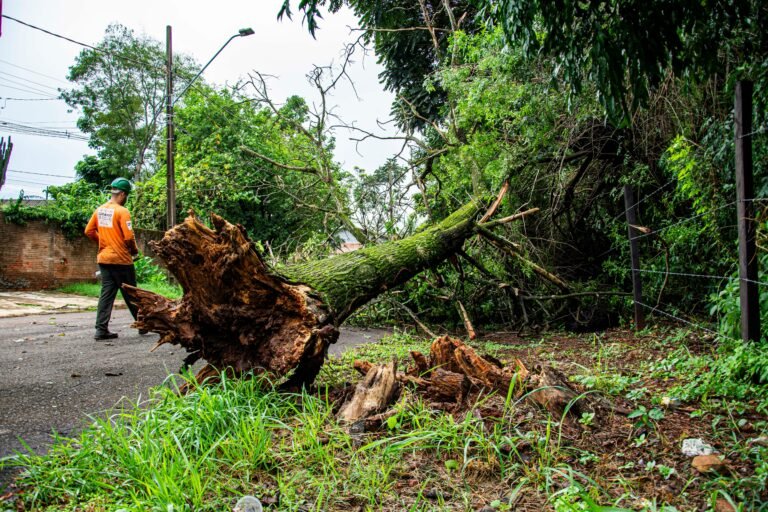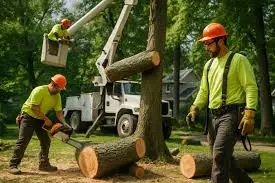How to Remove a Tree: A Step-by-Step Guide
Trees add splendor and color to your home. But now and again, a tree desires to go. It may be useless, diseased, or causing problems. Removing a tree is a huge venture. You need the proper equipment and a plan. This guide will let you through everything little by little.
Read also: How to Remove a Tree Stump
When Should You Remove a Tree?
Not all timber wants to be reduced down. Some simply need pruning. But if you’re experiencing any of those symptoms, it is time for elimination:
- The tree has lost its life and is now dead.
- It leans dangerously.
- Branches are breaking off.
- Pests have infested it.
- It shows signs of ailment or decay.
- It is just too close to power lines or buildings.
- If you are not sure, talk to a tree removal expert for a recommendation.
My Experience Removing a Tree
I recently had to remove a large tree from my backyard. The tree was becoming a hazard, with branches hanging dangerously close to my house. Instead of hiring professionals right away, I decided to tackle the job myself with careful planning. I used the same way to remove a tree as explained below.

Common Tree Removal Methods
You can remove a tree in unique ways. The high-quality approach relies on the tree’s size and vicinity.
1. Cutting It Down in Sections
This is the safest way to get rid of big timber. You prune the tree piece by piece, starting at the top. This prevents harm to surrounding systems.
2. Felling the Tree
If the tree is in an open space, you could cut it at the base and permit it to fall in a single piece. This requires for careful planning and a clear falling route.
3. Using Heavy Equipment
For massive timber, specialists use cranes or bulldozers. This approach is speedy, however pricey and requires professional operators.
4. Natural Decay
If safety is not a challenge, you can let your tree rot naturally over time. This takes years, although, and can entice pests.
5. Controlled Explosives (Rare)
In uncommon instances, managed explosions are used for large, risky timber. This is only finished by the way of professional.
Tree Removal Tools
Having the proper tools makes the activity easier and safer.
- Chainsaw: The principal device for cutting down the tree.
- Hand Saw: Good for small trees and branches.
- Axe: Helps chop small elements of the trunk.
- Rope: Used to guide falling branches and stabilise huge tree portions.
- Ladder: required for reaching high or hard-to-reach branches.
- Protective Gear: Includes gloves to helmet.
- Wedges: Help manage the direction of the fall.
- Stump Grinder: Needed to remove the stump completely.
- Shovel: Helps take away roots and clean the place.
How to Remove a Tree Step by Step
Step 1: Get Permission
Some areas require an allowance before tree elimination. Check with your nearby government first.
Step 2: Inspect the Tree
Check for decay, sickness, or vulnerable branches that might fall all of a sudden.
Step 3: Prepare the Area
Clear the space across the tree. Remove something that could get damaged. Plan a safe escape path in case the tree falls all at once.
Step 4: Wear Safety Gear
Put on gloves and wear safety glasses and a helmet. When using a chainsaw, put on ear safety too. Safety must continually come first.
Step 5: Cut Off the Branches
Start at the lowest point and way your manner up. Remove small branches first. Use a hand saw or chainsaw. Tie larger branches with rope earlier than reducing them to prevent their fall.
Step 6: Make the First Cut on the Base
Find the course where you need the tree to fall. Cut a notch on that aspect. The notch has to be one-third of the way into the trunk. This helps guide the autumn.
Step 7: Make the Final Cut
Go to the alternative facet of the tree and cut straight thru. When the tree starts to lean, go far speedy. Never flip again on a falling tree.
You can dig it out, grind it down, or allow it to rot evidently. Grinding is the quickest method, but burning or chemical treatment also can be considered.
Tree Stump Removal Methods
After the tree is gone, the stump stays. Here are a few methods to get rid of it:
1. Digging It Out
This is the most hard work-in-depth method. You can use a shovel along with an axe to reduce the size of roots and pull out the stump. It’s best for small to medium-sized timber.
A stump grinder shreds the stump into small pieces. This can be real quick and powerful and is also best for huge trees and professionals.
3. Burning the Stump
Drill holes into the stump and fill them with kerosene. Light it up and let it burn down. Be cautious with this method. Check neighborhood fireplace policies first.
4. Using Chemicals
Some chemical compounds speed up the rotting process. Pour them into holes drilled within the stump and wait a few weeks. This approach is gradual but requires minimal effort.
5. Covering with Soil
Burying the stump with soil accelerates the decomposition. Microbes and moisture smash it down over time.
Reuse of the wood:
Once the tree is down and you need to cope with the wood. Here’s what you can do:
- Use it as a fire-wood.
- Use it for mulch.
- Sell or donate it.
- Contact a local recycling center.
- Call an expert provider for removal.
How to Stay Safe While Removing a Tree?
Tree removal can be risky. Follow given hints to stay safe:
- Never work alone. Have someone close by in case of an emergency.
- Watch out for power strains. If the tree is close to one, call an expert.
- Keep pets and kids far away from the place.
- Inspect your gear before beginning.
- Check the climate. Avoid working in excessive winds or rain.
- Have a first resource kit close by.
Why Hire a Professional?
Trees elimination is dangerous. A falling tree can harm property or cause accidents. Professionals have the proper gear and skills to address the task properly.
Read this guide also: How to Hire a Tree Removal Company
Benefits of Hiring a Professional:
- They have expertise and know-how.
- They use a specialized device.
- They deal with stump removal efficaciously.
- They provide clean-up offerings.
- They lessen the threat of asset damage.
If you need trouble-free tree elimination, call our group. We offer rapid, secure, and less costly services. Let us do the difficult work so you don’t have to. Contact us these days for a free quote!
How Much Does Tree Removal Cost?
The cost of removing a tree varies based on size, location, and complexity. Use a tree removal cost calculator to estimate expenses.
Read also: How much does tree removal cost
Factors Affecting Cost:
- Tree Size: Larger trees cost more to remove.
- Location: Trees near buildings or power lines require specialized removal techniques.
- Stump Removal: An extra charge applies if you want the stump removed.
- Emergency Removal: Urgent removal after a storm can be pricier.
Typical costs range from $200 to $2,000 depending on the circumstances.
Conclusion
Removing a tree is a huge activity. It calls for making plans, the right equipment, and safety precautions. Whether you do it yourself or rent an expert, constantly put protection first. If you are unsure of coping with the system, it is high-quality to let experts deal with it. A professional service ensures a smooth, strain-free enjoyment. Need help? Reach out to us these days, and let’s get that tree removed competently and effectively!
Frequently Asked Questions (FAQs)
Small trees (under 10 feet) are manageable for DIY removal, but large trees require professional help.
It depends on size and complexity. Small trees take a few hours, while large ones may take a full day.
Some trees can sprout from the remaining stump unless treated or fully removed.
Some cities require permits, especially for large or protected trees. Check local regulations.






